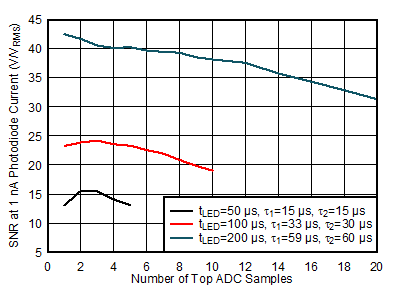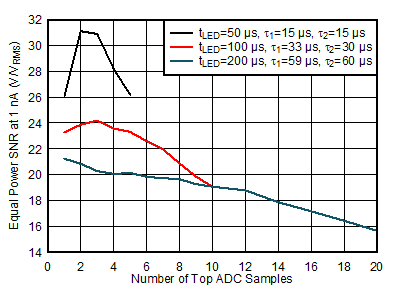SLVAEX3 October 2020 TPS8802 , TPS8804
4.3.3 Varying LED Pulse Length
Varying the LED pulse length tLED has a significant effect on the SNR. When scaling tLED, τ1 and τ2 by two, the SNR is expected to improve by the square root of two. With one ADC sample, the SNR/nA increases from 13.0 to 23.3 to 42.5 when tLED is increased from 50 μs to 100 μs to 200 μs. However, this also increases the power consumption, since the LED is enabled for more time. If the LED current is scaled to keep the power consumption constant, assuming that the photodiode current increases proportionally to the LED current and the LED supply voltage is constant, the 50 µs pulse has the highest SNR as shown in Figure 4-16. In general, increasing the LED pulse length and amplifier time constants is an effective way to increase the SNR when power consumption is flexible.

| tSAMP=20 µs |

| tSAMP=20 µs |